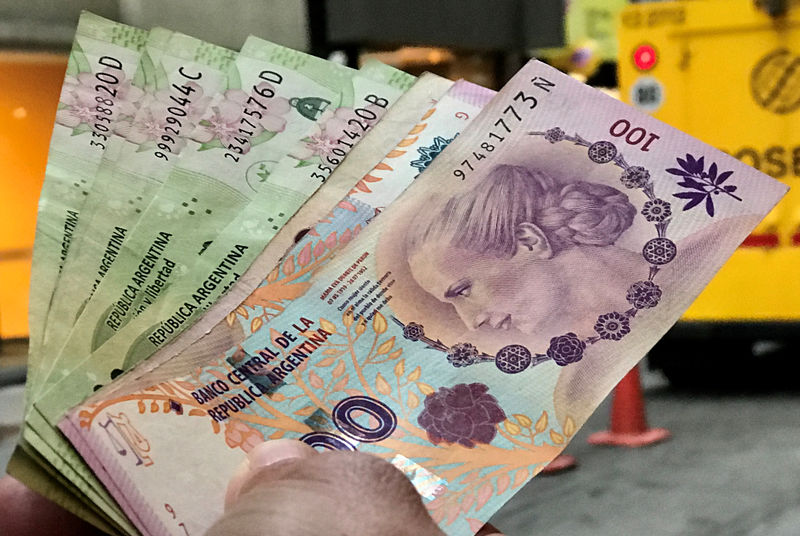 © Reuters. A man shows Argentine pesos outside a bank in Buenos Aires’ financial district
© Reuters. A man shows Argentine pesos outside a bank in Buenos Aires’ financial districtBUENOS AIRES (Reuters) – Argentina has “nearly closed” a new currency swap deal with China that will add the equivalent of $9 billion to the South American country’s reserves, the central bank said on Sunday.
Argentina and China first agreed to a swap program in 2009 to boost the South American country’s dwindling reserves under former President Cristina Fernandez. Last year, the center-right government of President Mauricio Macri and China agreed to extend the program for three more years.
The $9 billion expansion of the swap program was first reported by local newspaper La Nacion. “A $9 billion expansion of the ‘swap’ with China is practically closed,” Guido Sandleris was quoted saying in an interview with La Nacion published on Sunday.
A spokesman for the central bank confirmed the accuracy of Sandleris’ quotes in La Nacion.
The amount under negotiation is higher than the $4 billion reported by local media in August.
Sandleris was named Argentina’s new central bank chief on Tuesday after his predecessor unexpectedly resigned in the middle of negotiations with the International Monetary Funds on a more than $50 billion stand-by loan.
The shake-up comes as Argentina’s central bank has struggled to contain a more than 50 percent slide in the peso and inflation set to rise 40 percent this year.
On Friday, the peso
Sandleris said it would likely take a “couple weeks” for the bank’s new rules on market intervention to contain volatility.
“Whenever a new program is implemented there’s a period of transition and adaptation by the market, until it gets used to the new rules and signals given by the central bank,” Sandleris said in La Nacion.
As part of an additional $7.1 billion in financing from the IMF announced on Wednesday, the central bank has agreed not intervene in the local spot market unless the peso veers outside of a target band of between 34 and 44 pesos per dollar.
“It’s a rule we’re going to respect,” Sandleris said in the interview.
The bank is aiming to eliminate growth in the country’s monetary base through June of next year, Sandleris said. The monetary base has been growing by about 2 percent per month.
“Inflation is going to start to come down in coming months. Not in September…maybe not in October either,” Sandleris said, adding that the bank’s plan should yield results after that.
Fusion Media or anyone involved with Fusion Media will not accept any liability for loss or damage as a result of reliance on the information including data, quotes, charts and buy/sell signals contained within this website. Please be fully informed regarding the risks and costs associated with trading the financial markets, it is one of the riskiest investment forms possible.
Source: Investing.com





























